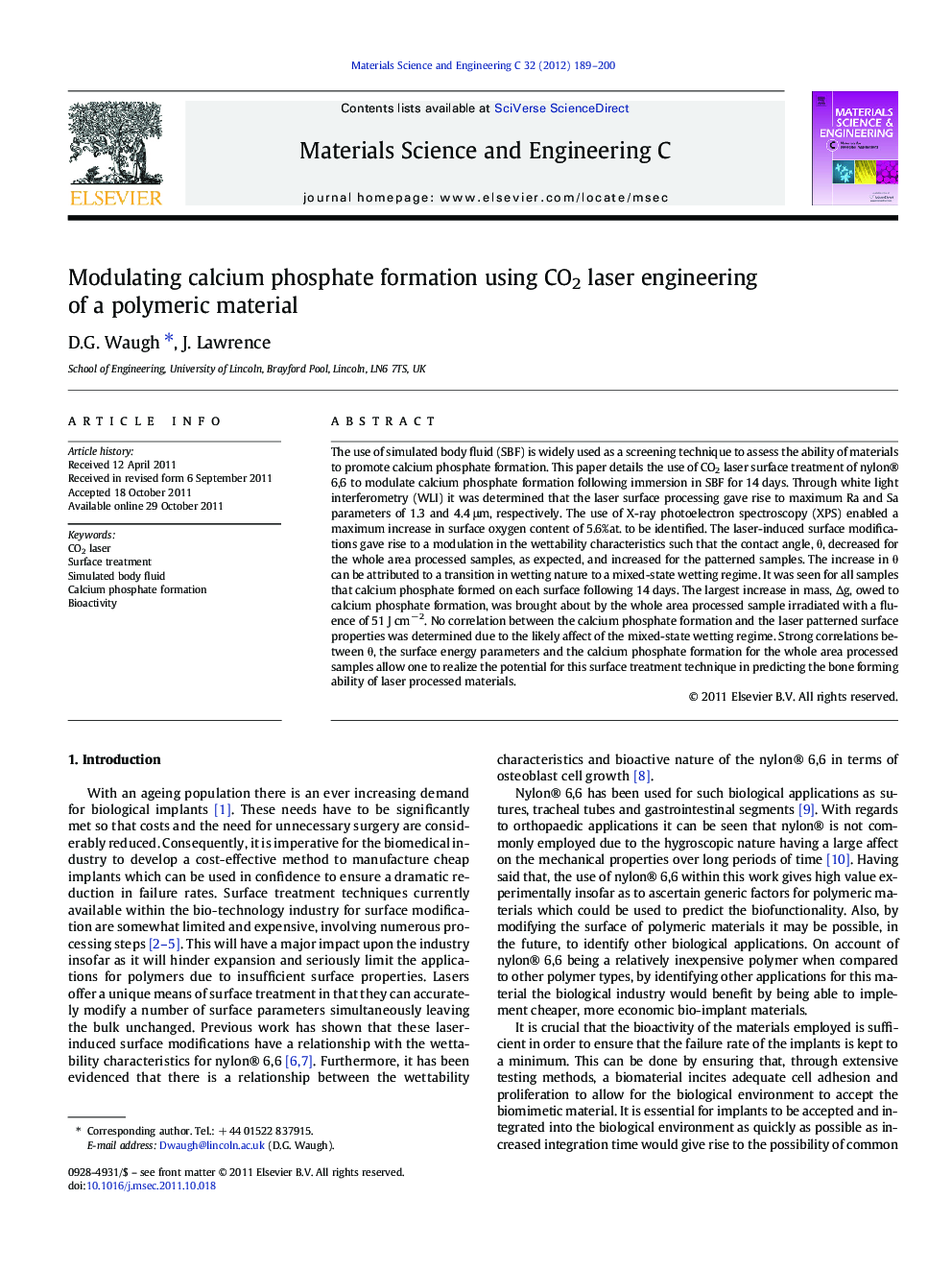| کد مقاله | کد نشریه | سال انتشار | مقاله انگلیسی | نسخه تمام متن |
|---|---|---|---|---|
| 1429570 | 987176 | 2012 | 12 صفحه PDF | دانلود رایگان |

The use of simulated body fluid (SBF) is widely used as a screening technique to assess the ability of materials to promote calcium phosphate formation. This paper details the use of CO2 laser surface treatment of nylon® 6,6 to modulate calcium phosphate formation following immersion in SBF for 14 days. Through white light interferometry (WLI) it was determined that the laser surface processing gave rise to maximum Ra and Sa parameters of 1.3 and 4.4 μm, respectively. The use of X-ray photoelectron spectroscopy (XPS) enabled a maximum increase in surface oxygen content of 5.6%at. to be identified. The laser-induced surface modifications gave rise to a modulation in the wettability characteristics such that the contact angle, θ, decreased for the whole area processed samples, as expected, and increased for the patterned samples. The increase in θ can be attributed to a transition in wetting nature to a mixed-state wetting regime. It was seen for all samples that calcium phosphate formed on each surface following 14 days. The largest increase in mass, Δg, owed to calcium phosphate formation, was brought about by the whole area processed sample irradiated with a fluence of 51 J cm− 2. No correlation between the calcium phosphate formation and the laser patterned surface properties was determined due to the likely affect of the mixed-state wetting regime. Strong correlations between θ, the surface energy parameters and the calcium phosphate formation for the whole area processed samples allow one to realize the potential for this surface treatment technique in predicting the bone forming ability of laser processed materials.
► Surface modifications brought about a modulation in the wetting of nylon 6,6.
► An increase in θ can be attributed to a mixed-state wetting regime.
► Laser surface treatment modulated the ability to promote apatite formation.
► Mixed-state wetting regime affected the promotion of uniform apatite formation.
► Method can be used to predict performance of a material due to trends identified.
Journal: Materials Science and Engineering: C - Volume 32, Issue 2, 1 March 2012, Pages 189–200